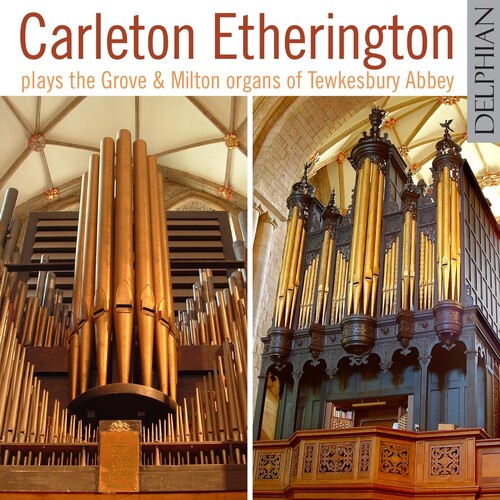Show results for
Deals
- 4K Ultra HD Sale
- Action Sale
- Alternative Rock Sale
- Anime sale
- Award Winners Sale
- Bear Family Sale
- Blu ray Sale
- Blues on Sale
- British Sale
- Classical Music Sale
- Comedy Music Sale
- Comedy Sale
- Country Sale
- Criterion Sale
- Electronic Music sale
- Fantasy Film and TV
- Folk Music Sale
- Hard Rock and Metal Sale
- Horror Sci fi Sale
- Jazz Sale
- Kids and Family Music sale
- Kids and Family Sale
- Metal Sale
- Music Video Sale
- Musicals on Sale
- Mystery Sale
- Naxos Label Sale
- Page to Screen Sale
- Paramount Sale
- Pop and Power Pop
- Rap and Hip Hop Sale
- Reggae Sale
- Rock and Pop Sale
- Rock Legends
- Soul Music Sale
- TV Sale
- TV Sale
- Vinyl on Sale
- War Films and Westerns on Sale

Plays Grove & Milton Organs of Tewkesbury Abbey
- (Jewel Case Packaging)
- Format: CD
- Release Date: 7/12/2011

Plays Grove & Milton Organs of Tewkesbury Abbey
- (Jewel Case Packaging)
- Format: CD
- Release Date: 7/12/2011
- Composers: Alexandre Guilmant, Alfred Hollins, August Gottfried Ritter, Flor Peeters, Leonce de Saint-Martin, Paul Creston, Sigfrid Karg-Elert, Théodore Salomé, William Thomas Best
- Performers: Carleton Etherington
- Label: Delphian
- UPC: 801918340895
- Item #: DELP834089
- Genre: Classical Artists
- Release Date: 7/12/2011
- This product is a special order
Product Notes
Few ecclesiastical buildings in the United Kingdom can boast of possessing two pipe organs; of those that can, fewer still can rival the quality of the instruments in Tewkesbury's magnificent Norman abbey. The first, known as the 'Milton', was originally made for Magdalen College, Oxford and came to Tewkesbury in 1737; it is a happy example of enlargement and rebuilding over the decades, resulting in it's current incarnation as a flexible and thoroughly contemporary instrument capable of interpreting a wide spectrum of the repertoire. The 'Grove' instrument, situated in the North Transept, is by the late nineteenth-century partnership of Michell & Thynne. Their 'model organ' was designed to be as flexible as possible within the confines of the smallest number of stops, and the result was an immediate success: it's first appearance at the 1885 Inventions Exhibition in London caused a sensation, and when it was shown at the Liverpool Exhibition of 1886, the legendary organist W.T. Best proclaimed it to be 'the finest organ of it's kind that I have ever played upon'.


